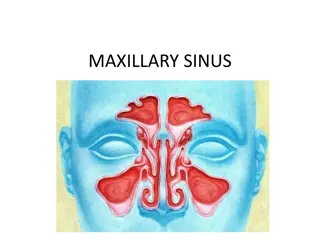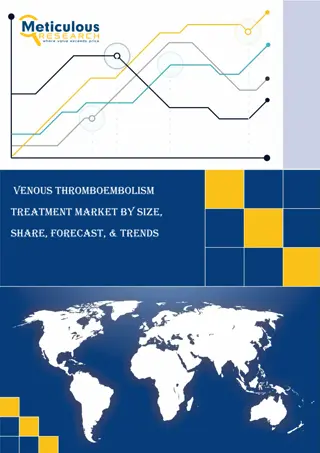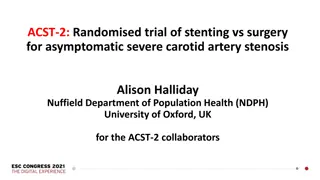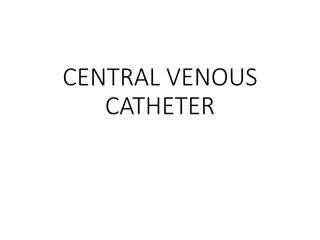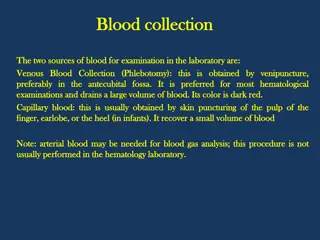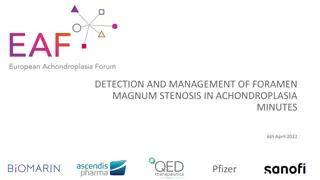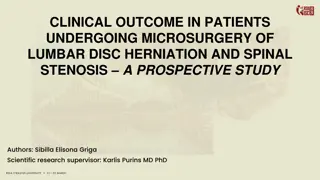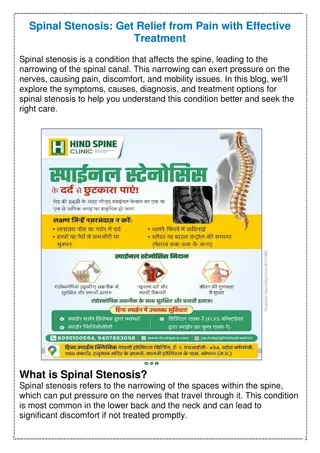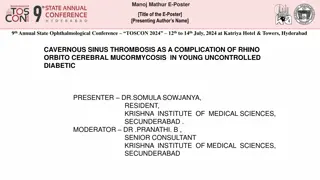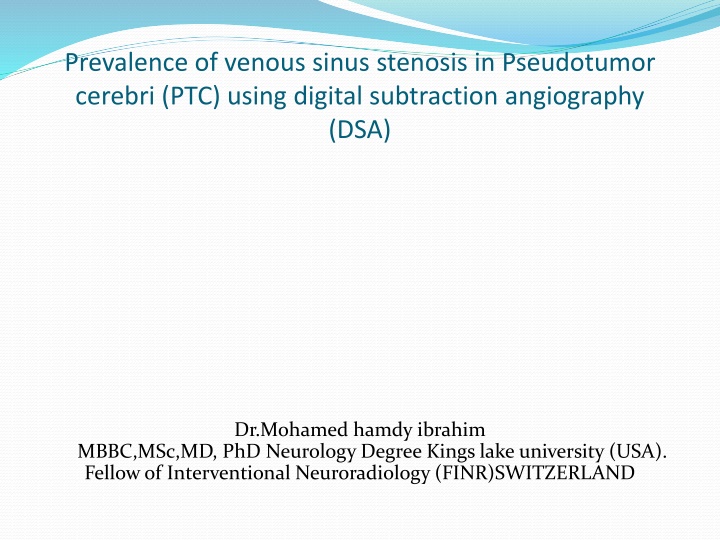
Prevalence of Venous Sinus Stenosis in Pseudotumor Cerebri (PTC)
Pseudotumor cerebri, also known as benign intracranial hypertension, has been described throughout history using various terms. This condition, characterized by increased intracranial pressure, presents with specific criteria according to Dandy and more recent Friedman and Jacobson classifications. Despite being considered benign in etiology, visual loss can occur in 30% of cases. Elevated intracranial venous pressure plays a role in the pathophysiology, either as a cause or consequence of the condition. Studies have reported varying incidence rates and demographics related to PTC.
Download Presentation

Please find below an Image/Link to download the presentation.
The content on the website is provided AS IS for your information and personal use only. It may not be sold, licensed, or shared on other websites without obtaining consent from the author. If you encounter any issues during the download, it is possible that the publisher has removed the file from their server.
You are allowed to download the files provided on this website for personal or commercial use, subject to the condition that they are used lawfully. All files are the property of their respective owners.
The content on the website is provided AS IS for your information and personal use only. It may not be sold, licensed, or shared on other websites without obtaining consent from the author.
E N D
Presentation Transcript
Prevalence of venous sinus stenosis in Pseudotumor cerebri (PTC) using digital subtraction angiography (DSA) Dr.Mohamed hamdy ibrahim MBBC,MSc,MD, PhD Neurology Degree Kings lake university (USA). Fellow of Interventional Neuroradiology (FINR)SWITZERLAND
Throughout history , many terms have been used to describe the same disease interchangeable as Pseudotumor cerebri (PTC) , benign intracranial hypertension ( BIH), serous meningitis and Otitic hydrocephalus and Idiopathic intracranial hypertension ( I I H ).6
What is PTC? According to Modified Dandy Criteria : ( 1985) Most famous and Used: Symptomsand signs of increased intracranial pressure. 2. No Localizing in neurological examination ( Except sixth cranial nerve lesion orrarely other false localizing signs). 3. Normal neuroimaging ( CT brain , MRI brain). 4. Increased intracranial pressure as measured by lumbar puncture ( 250 mmH2O). 5. Normal CSF constituents. 6. Awake alert patient. 7. Noother Causesof increased intracranial pressure present. 8. Benign clinical course apart from visual deterioration. 1.
Most recently , Friedman and Jacobson (2002): If symptoms present , they may only reflect those of generalized intracranial hypertension or papilledema. 2. If signs present , they may only reflect those of generalized intracranial hypertension or papilledema. 3. Documented elevated intracranial pressure measured in lateral decubitus position. 4. Normal CSF composition 5. Noevidenceof brain lesion by MRI AND MRV 6. Noothercause of I.I.H. 1.
Is it really Benign? It is benign as regard the etiology , but 30% of cases ends with visual loss . 7
Is it really idiopathic ? Elevated intracranial venous pressure seems to be of importance in PTC either as a cause ( secondary intracranial hypertension) or as a consequence ( idiopathic intracranial hypertension ) of increased intracranial pressure . 8
Rhadharkrishnan et al (1993) estimated annual incidence in Benghazi , Libya in a study conducted between 1982 and 1989 as 2.2 per 100.000 populations Female to male ratio is 8: 1 21.4 per 100.000 obesewomenaged 15- 44. Corbett et al., (1988): Reported that age group ranging from 1 to 67 years with peak incidence in the third decade.
Pseudotumor cerebri (PTC) is a neurological disorder presenting with symptoms of incresed intracranial pressure (headache, visual distrubances, localizing neurological findings in awake alret patient. papilledema) without Various pathogenic mechanisms have been considered to explain the raised intracranial pressure in those patients. The role of such venous disease in PTC has been revisited as several groups using invasive monitoring, have documented high pressure in thevenous sinuses in typical cases5
It appears to be the result of focal stenotic lesions in the dural sinuses obstructing the venous outflow. This has led to the suggestion that undetected intracranial venous hypertension mayafterall be the substrate for PTC6. Aim of the study In our study we aimed at evaluating the prevalence of venous sinus stenosisalong patientsof PTC .
Materials and Methods This study was conducted on THIRTY patients with symptoms and signs confirming the diagnosis of PTC. Patients were recruited from the neurology, neurosurgery departmentsand outpatientclinics. Inclusion criteria were: (Modified Dandy Criteria)7 Exclusion criteria: 1- Patients with true localizing findings on examination denoting focal brain dysfunction. 2- or iatrogeniccauses of intracranial hypertension. 3- Patients with clinical and neuroimaging evidence of acute primary dural sinus thrombosisorcortical vein thrombosis. Patients with traumatic, neoplastic, infectious, structural
Methods: All patients included in this work were subjected to the following: 1) Completegeneral and neurological assessment. 2) Measurementof body mass index: (BMI) 3) Full ophthalmologicassessment included: A. Visual acuity measurement: using Snellen chart. B. Direct and indirect examination: To assessand grade papilledema. C. Automated perimetry: 4) Full Laboratory investigations 5) Lumbarpuncture (LP). ophthalmoscopic fundus
Radiological investigations: a. CT scan brain +/- MRI brain without contrast. b. Magnetic resonance intracranial venous system by time of flight (TOF) or phase contrast techniques. c. Digital subtraction cerebral Angiography (DSA) (venous phase): 7) Statistical methodology: Analysis of data was done by IBM computer using SPSS (statistical program for social science) (version 10) venography (MRV) of the
MRV brain showed that 24 patients (80%) showed filling gaps. Digital subtraction cerebral angiography (venous phase)showed 9 patients (30%) had stenosis in their dural sinuses. MRV showed to be a good screening tool since it had 100% sensitivity and negative predictive value. However, since it has a moderate specificity (62%) with a positive predictive value (PPV) of only 35%, then lesions detected should be confirmed with digital subtraction cerebral angiography (venous phase) particularly those involving the transverse and sigmoid sinus (see Fig. 1A).
Table 5 Validity of MRV in relation to DSA in detection of sinus stenosis. % Variables 100% Sensitivity 62% Specificity 35% PPV 100% NPV
MRV was found to be a good screening tool since it had 100% sensitivity and negative predictive value. Therefore, if MRV is normal no further investigations are needed. However, since it has a moderate specificity (62%) with a positive predictive value (PPV) of only 35%, then lesions detected should be confirmed with digital subtraction cerebral angiography (venous phase) particularly those involving the transverse and sigmoid sinus.
Fig. (1):(A) MRV with a filling defect in the Rt transverse sinus suggestive of stenosis with aplasia of the left transverse and sigmoid sinus. (B) Digital subtraction cerebral angiography (venous phase)oblique view showing the tight stenosis (99%) of the distal part of the right dominant transverse sinus with aplasia of the left transverse and sigmoid sinus.
Studying the intracranial venous system in patients with PTC is an important helps in understanding the pathophysiology of the disease, expecting response to medical and surgical treatment. Also detection of venous sinus stenosis may open the way to a novel therapeutic option for refractory patients.
The role of venous sinus stenosis should be strongly considered in the etiology of PTC. 1. 2. Although modified DANDY criteria, considered being standard criteria for diagnosis of PTC, yet it is criticized in two main points. It missed the atypical types of PTC, secondly it underestimates the role of venous sinus pathology especially stenosis. So it is possible to add additional point to these criteria, which is "Normal venous phase of digital subtraction cerebral angiography". For proper diagnosis of PTC.
3. Digital subtraction cerebral angiography (venous phase) could be a standard investigation in PTC patients especially in patients with bilateral or unilateral dominant sinus filling gaps at the level of MRV. 4.A new protocol could be designed in the management of pseudotumor cerebri patients
References 1. Donaldson JO. Pathogenesis of pseudotumor syndromes. Neurology 1981; 31: 877-80. 2. Walker RW. Idiopathic intracranial hypertension: any light on the mechanism of raised pressure? J Neurology Neurosurgery Psychiatry 2001; July 71: 15-18. 3. Bouisse V. Isolated intracranial hypertension as the only sign of cerebral venous thrombosis. Neurology 1999; 42, 531- 37. 4. Lee AG. Magnetic resonance venography in idiopathic pseudotumor cerebri . J Neuro-Ophthalmol 2000; Mar 20(1):12-14. 5. King JO, Mitchell PJ, Thomson KR, et al. Cerebral venography and manometry in idiopathic intracranial hypertension. Neurology 1995; Dec 45(12): 2224-28
6) Sankar Bandyopadhay (2001) : History of neurology Pseudotumor cerebri , Arch Neurolo/vol 58 : 1699-1701, Oct 2001. 7) Giuseffi V . Siegal P.Z et al., (1991) : Symptoms and disease association in idiopathic intracranial hypertension: acase control study . Neurology, 41: 239. 8) Rohr. A., Dorner . L et al ( 2007) : Reversibility of venous sinus obstruction in I.I.H, Neuroradiology. 28:656-659, April 2007. American journal of
It has been published in THE EGYPTIAN JOURNAL OF NEUROLOGY AND NEUROSURGERY, VOL. 45 (1)- JAN 2008. www. Esnpn.org & www.ejnpn.org. It will be represented on 16 th EFNS in Stockholm and re- published in EUROPEAN NEUROLOGY JOURNAL .

